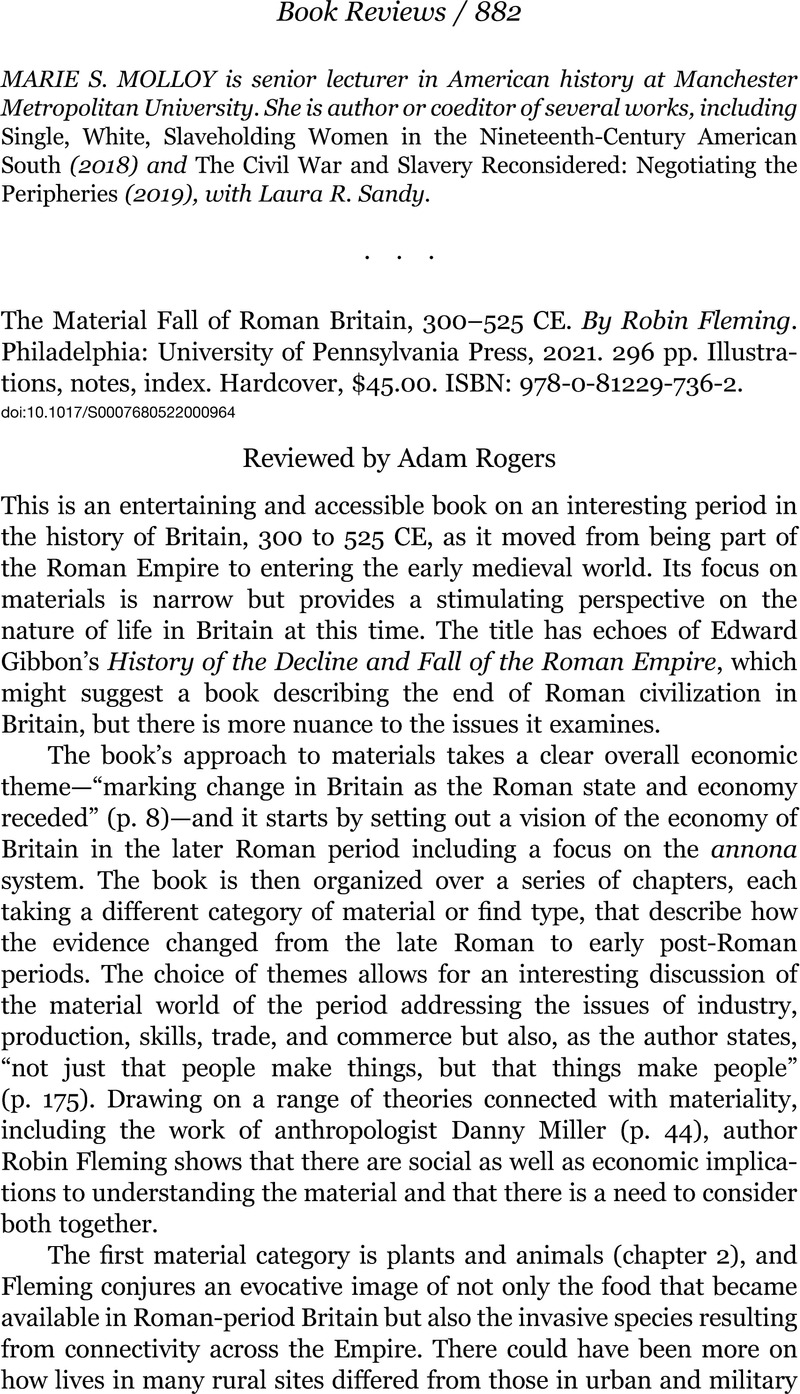No CrossRef data available.
Article contents
The Material Fall of Roman Britain, 300–525 CE. By Robin Fleming. Philadelphia: University of Pennsylvania Press, 2021. 296 pp. Illustrations, notes, index. Hardcover, $45.00. ISBN: 978-0-81229-736-2.
Review products
The Material Fall of Roman Britain, 300–525 CE. By Robin Fleming. Philadelphia: University of Pennsylvania Press, 2021. 296 pp. Illustrations, notes, index. Hardcover, $45.00. ISBN: 978-0-81229-736-2.
Published online by Cambridge University Press: 08 February 2023
Abstract
An abstract is not available for this content so a preview has been provided. Please use the Get access link above for information on how to access this content.

- Type
- Book Review
- Information
- Copyright
- Copyright © 2023 The President and Fellows of Harvard College


